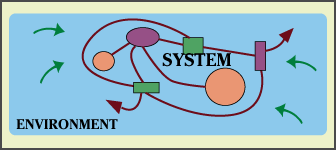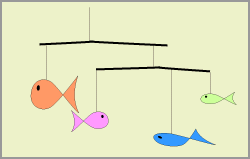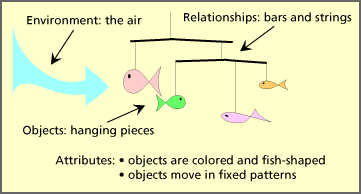
 TUTORIAL: THE COMMUNICATION PROCESS
TUTORIAL: THE COMMUNICATION PROCESSINTRODUCTION . SYSTEMS . THE ROLE OF COMMUNICATION . HUMAN AND NON-HUMAN COMMUNICATION . THE SHANNON/WEAVER MODEL OF COMMUNICATION . CONTENT AND CODE .
"n. 1. the act of transmitting 2. a) a giving or exchanging of information, signals or messages by talk, gestures, writing, etc. b) the information, message, etc. 3. close, sympathetic relationship. 4. a means of communicating; specif., a) [pl.] a system for sending and receiving messages, as by telephone, telegraph, radio, etc. b) [pl.] a system as of routes for moving troops and materiel c) a passage or way of getting from one place to another 5. [often pl. with sing. v.] a) the art of expressing ideas, esp. in speech and writing b) the science of transmitting information, esp. in symbols." - Webster's New World Dictionary, 2nd College Edition
How often have you heard statements such as these?
The word "communicate"
derives from the word "common" - to share, exchange, send along, transmit, talk, gesture, write, put in use, relate. So an investigation
of this subject might begin with the question: What do all studies of communication
have in common? What are the shared concepts that make the study of
"communication" different from the study of subjects such as "thought" or
"literature" or "life?" When someone says, "this is a communication
problem," what does that mean?
![]() 9001
9001
This tutorial begins with one of the definitions of "communication" that is included in the dictionary entry that starts this section:
Communication: a system for sending and receiving messages.
An investigation of this statement will lead first to the idea of a system, and then to the idea of messages.
A "system" is typically described as a collection of parts which are interconnected, or related to, one another and which also relate to the environment which surrounds the system. In the picture below, the circles and rectangles represent the parts, the solid lines represent the relationships among the parts, and the arrows show the system's interaction with its environment.

To say that the elements of a system are interconnected implies that if something happens to change one part, then at least one other part must change, too. Naturally, as soon as that second part changes, some other part must then change ... and so on. This is somewhat like the effect of touching a bowl of gelatin - a single touch results in a long period of jiggling motion.
Because systems interact with their environments, they are constantly being "touched" from the outside. This means that most systems are constantly changing, and, because these changes take time, a system cannot be described as having one particular shape. It is this property that makes systems useful for studying the kinds of situations that scholars usually refer to as events, or processes.
The idea of a system is well illustrated by the device called a "mobile." The parts of this system, or objects, as they are often called, are represented in the illustration below as "fishes." The relationships are established by the bars, which maintain a horizontal spacing among the fish, and the pieces of string, which keep the fish at certain vertical depths.

Notice that the strings and bars
This is a fine example of how a system works. If any one fish moves, at least one other fish will react by moving, too. Thus, the smallest breeze will keep the mobile in constant motion. The following quotation by Stephen Littlejohn provides a more formal definition of the term "system"
From the simplest perspective, a system can be said to consist of
four things.
Clearly, the "fish" mobile meets these requirements.

.....................................................................
It is important to do the following exercise. Thinking about systems in this way is the most effective way to understand them.
.....................................................................
Consider each of the three systems named here and try to:
THREE SYSTEMS:
ANSWERS:
In fact, it might be said that communication is the "glue" that holds a system together. This gives insight into the nature of communication itself, to wit:
But communication is not merely passive connection. Rather, communication is the process of connecting. It is a collection of renewable actions that work throughout space and over time to form relationships among objects.
Communication is not an object itself; it is not a thing, and this leads to a second insight into the nature of communication.
This is an important observation. It implies that communication
can never fully be understand by looking only at "things." To understand communication, we must also look at the
relationships among the "things" and at the environments in which the "things"
reside.
![]() 9008
9008
For example, consider some common communication "things":
In each case the thing - the actual book, the actual video tape, the actual invitation - is not the communication.
There are additional observations to be drawn from these examples.
For ease, these exchanges among communicators will be given the general name: messages.
Notice, for example, that each of the previous set of examples contained sender and a receiver and a message. The book was written by its author to be read by its audience. The video tape was produced by one group of people to be watched by another. And the invitation is a message sent from my sister to me.
The idea of "messages" is considered at length in these tutorials. At this point, however, it is appropriate to reiterate the two basic rules that have just been uncovered: